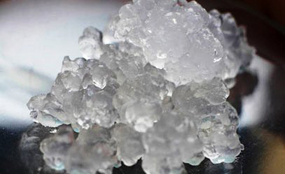Innventia, BillerudKorsnäs to Build Large-Scale, Mobile Nanocellulose Factory
![]() Print this Article | Send to Colleague
Print this Article | Send to Colleague
 Sweden-based Innventia and BillerudKorsnäs are collaborating to build a mobile demonstration plant for nanocellulose and to test the material in full-scale papermaking. The project is financed by the Swedish government innovation agency Vinnova, Innventia, and BillerudKorsnäs.
Sweden-based Innventia and BillerudKorsnäs are collaborating to build a mobile demonstration plant for nanocellulose and to test the material in full-scale papermaking. The project is financed by the Swedish government innovation agency Vinnova, Innventia, and BillerudKorsnäs. Nanocellulose can be used as additives in papermaking to make lighter and stronger paper and board. It can also be used in a variety of other applications in the food, pharmaceutical, and construction industry.
This means that nanocellulose could give paper completely new properties and could replace plastics, for example, in many areas. More products could thus be produced from renewable and biodegradable raw material.
Since 2010, Innventia has run a pilot plant for the production of nanocellulose at the research institute in Stockholm. By this establishment, sufficiently large amounts of nanocellulose could be produced for research and development addressing paper applications. In the unique collaboration between BillerudKorsnäs and Innventia, the mobile demonstration plant now being built makes it possible to produce nanocellulose on a large scale for use in full-scale trials on paper and board machines.
"Nanocellulose has a fantastic potential in paper applications as well is a number of other applications. This new project is exciting as it gives us the possibility to validate the potential in full scale," said Mikael Ankerfors, project manager, New Business Lab, BillerudKorsnäs.
"Innovation is at the core of our business model. To be part of this project and explore the potential of full scale production of nanocellulose is a perfect match with our mission to challenge conventional packaging for a sustainable future," said Magnus Wikström, SVP Strategic Development, BillerudKorsnäs.
Anna Wiberg, director of Business Development Materials Processes, Innventia, added that "this is a very important step. The availability of test beds and demonstration plants are often crucial for up-scaling new processes resulting from our research and development."
Torgny Persson, VP, Material Processes, Innventia, noted that "thanks to the collaboration with BillerudKorsnäs, the development towards new nanocellulose-based materials can take a leap. Later, we will offer more companies access to the demonstration plant as a support in their innovation processes."
Nanocellulose, also called microfibrillated cellulose MFC (see photo) or nanofibrillated cellulose (NFC), is produced by delaminating cellulosic fibers in high-pressure homogenizers. Fully delaminated nanocellulose consists of long (1-2 micrometres) microfibrils (5-20 nm in dia.) and has the appearance of a highly viscous, shear-thinning transparent gel.
The material has exceptional strength characteristics on a par with Kevlar, a lightweight material used to manufacture high-strength, durable materials. However, in contrast with Kevlar and other materials based on fossil fuels, nanocellulose is completely renewable. There are a wide variety of potential applications for nanocellulose, including, for example, the manufacture of both paper and board.
With regard to paper and board, nanocellulose could be used as a strengthening agent in paper with a high filler content. Other areas of application may be surface sizing and coating, e.g. as a barrier material (against oxygen, water vapor, grease/oil) in food packaging. Then there are applications in the field of nanocomposites, non-caloric food thickeners, emulsion/dispersion, oil recovery applications, cosmetic/pharmaceutical applications, and applications in the electronics sector.
For more information, contact Mikael Ankerfors at BillerudKorsnäs or Torgny Persson at Innventia.


